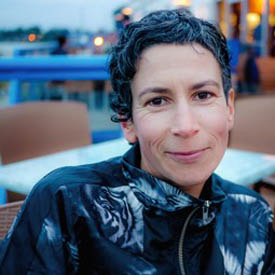Lowering Simon Fraser
2019
Return to home page Return to Projects page
©Contemporary Art Gallery, Maddie Leach and Michael Kluckner,
2019
My involvement with Maddie Leach's conceptual art project about
the Simon Fraser monument in New Westminster, BC, began with a
phone call and invitation for coffee in the summer of 2018. Maddie
Leach, well-established as a conceptual artist with a university
teaching position in Sweden, had become intrigued by the Simon
Fraser monument during visits with an aunt who lived in New
Westminster. 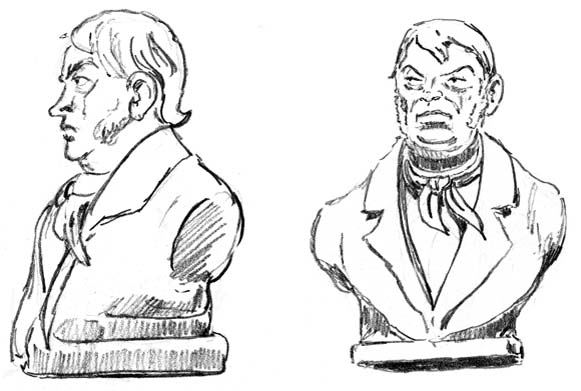 Commissioned in the early 20th century by a patriotic, rather jingoistic "colonial" group called the Native Sons of BC, the monument represented for them the arrival of White civilization and British culture in Indigenous British Columbia, although in reality Simon Fraser was a fur trader whose employer, the North West Company, was against settlement by British colonists or anyone else. Fraser famously made it almost to tidewater in 1808, having descended a river he believed to be the Columbia, but was turned back by angry Sto:lo people because, in his rush to see the ocean, he hadn't followed the protocols of the First Nations along his route, and had evidently stolen a canoe. He and his men retreated back upstream. 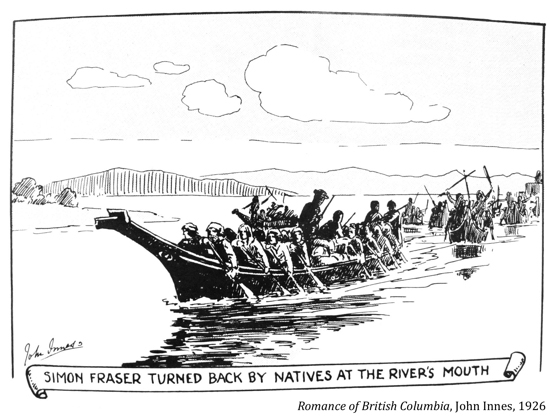 To make a long story short, the Hudson's Bay Company, which had taken over the North West Company, established Fort Langley in 1827, and traded successfully and peacefully until the massive disruption of the gold rush of 1858 and the ensuing colonization of the entire Fraser River watershed. The colony of British Columbia became part of Canada in 1871. Maddie Leach became interested in the bronze monument by Québec sculptor Louis-Phillipe Hébert because of the number of times it had been moved, disassembled and reassembled. It began its life atop a tall plinth near the high point of the park on Albert Crescent, and was subsequently moved a few times down the slope, eventually sitting on a stubby plinth surrounded by the road and ramp system for the Pattullo Bridge. In the 1990s, it was moved yet again to the New Westminster quay and installed along the boardwalk, with Simon looking at a pub rather than out onto his namesake river. Her project, she told me, was to get permission to lower the plinth even further, and to take the removed piece of granite to the headwaters of the Fraser River in the Rocky Mountain Trench, where it would gradually lose its hard human-cut edges and return to a natural form. Here is her project description from her own website, and the description on the Contemporary Art Gallery (Vancouver) website, which funded it together with Creative New Zealand and the Vancouver Foundation. What intrigued me was the way the "lowering" of the monument paralleled a general decline in interest in history and the implied dismissal of the master narrative of the province's settlement. Maddie needed an illustrator and interpreter for the historical material she'd uncovered, as well as a way of describing (non-verbally) her desire to further lower the monument, so she hired me. (She is not an artist who draws or paints, as it were. This seems to me quite typical of conceptual art projects, which are often collaborative.) It was an illustration job, yes, but with a lot of opportunity for creativity. However, the project got off on the wrong foot by focusing on a restaging of the monument's dedication in 1908 (the plinth) and 1911 (the bronze bust itself), adding in the uninvited Indigenous and Chinese people who were part of the community. The intention was to do it as cutouts on coroplast and arrange them at the site. |
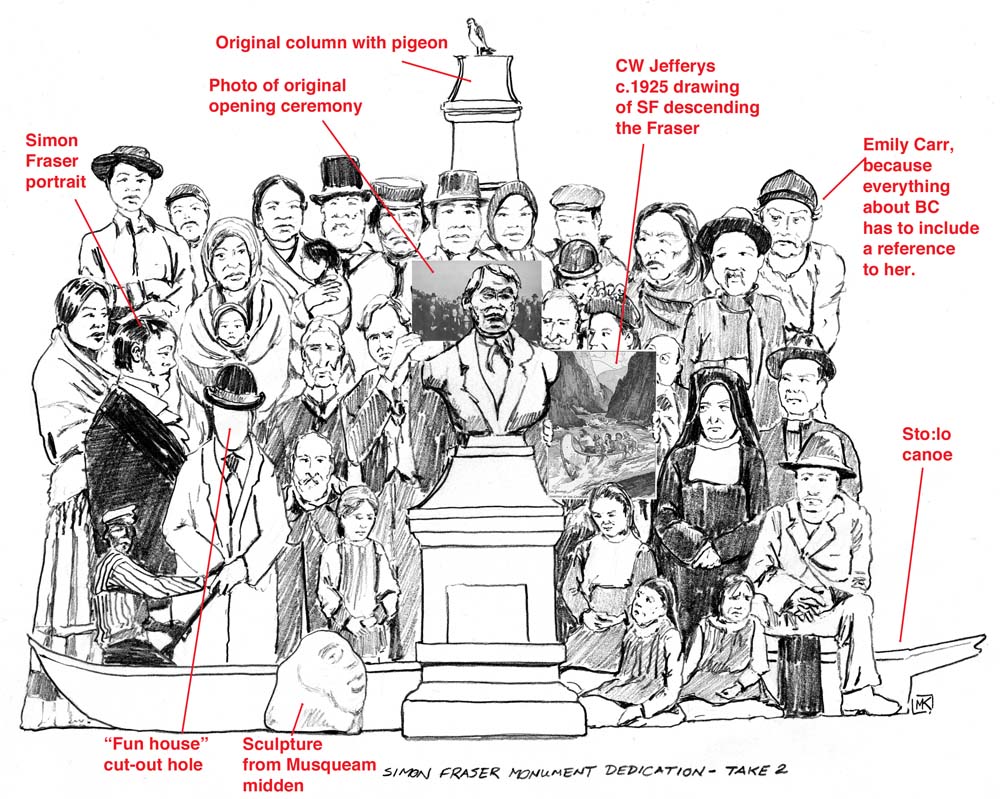
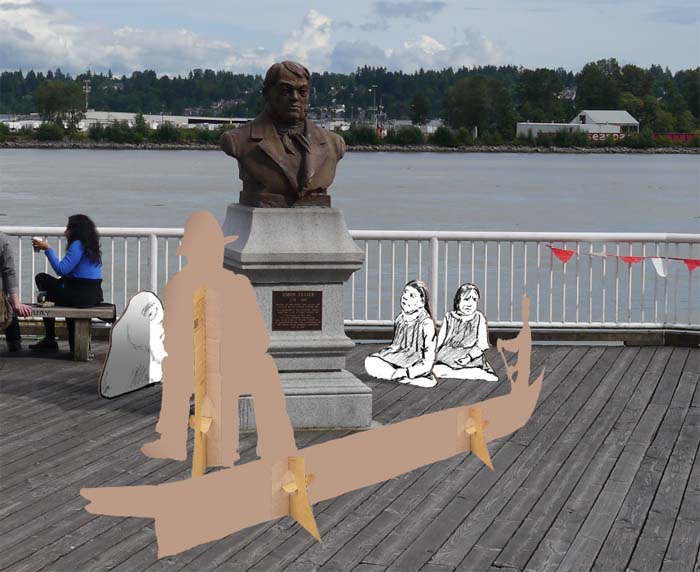
| Maddie's colleague Adrian in New Zealand played around with the
idea in Photoshop. However, it turned out to be a non-starter. There were problems, according to the project funder, with me representing Indigenous or Chinese people in my artwork "without permission" – there's a kind of cautious censorship in this age of Identity Politics and a desire to avoid any tinge of cultural appropriation. It was an impasse, and as it looked like this matter alone might derail the project, we returned to the idea of a wordless comic-book or graphic novel narrative. I thought briefly of doing it as a scroll printed on vinyl that could be unveiled as a kind of performance piece. Finally, it was decided to do it as a book – that is, a "bookwork" like an artwork in the language of contemporary art, which was wonderful from my point of view as I like any artwork that is meant to be mass-produced. I represented the Musqueam people who chased Fraser and his crew upriver as a modified Hokusai Wave with eagles' heads at the crest. |
| The cool final product, about 8 x 10 1/2 inches, 44 pages with a
cover, looks like this, with blank sections indicating shifts in
time. It was designed by Fount-via (Warren Olds and Felix
Henning-Tapley) in New Zealand and printed in China as an edition
of 500 copies. The only words in it, other than the
acknowledgements on the back cover, are 4 pages of New Westminster
city council minutes from June 12, 2017 printed on red paper – the
meeting at which the proposal was presented by the Contemporary
Art Gallery. Technically, because the budget was rather modest, I used pencil drawings and digital collage to create the narrative. Little drawings could be moved around in Photoshop over repeating backgrounds. The device to move the monument from place to place is a hybrid upside-down-canoe helicopter – a logical choice, as Simon Fraser used canoes all the time. |
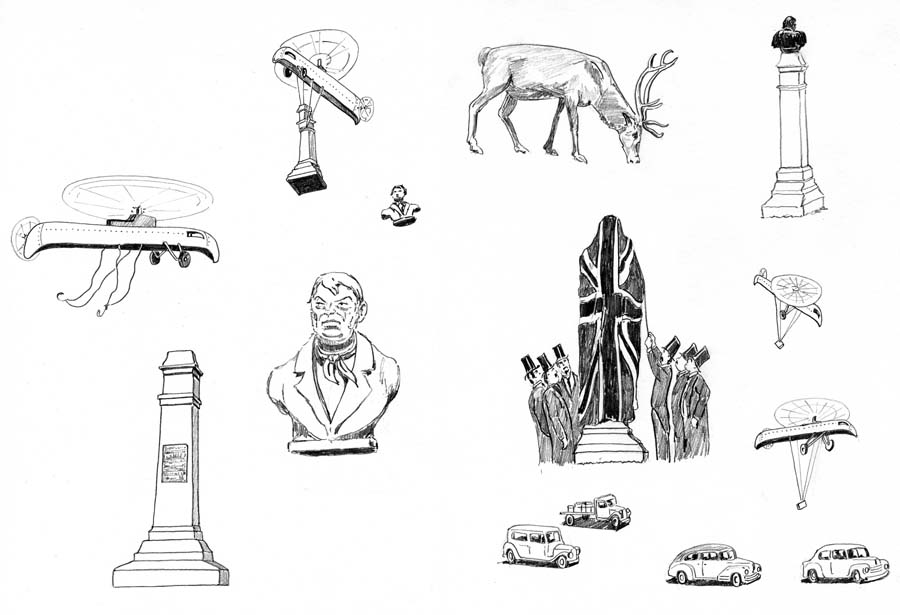
Another part of the project was a billboard on the Queensborough Bridge
that reproduced the headline of a newspaper article from the 1940s,
when the Simon monument briefly disappeared.

(Maddie Leach photo)
So, this is "Lowering Simon Fraser," all 52 images of it, the edges uncropped ...
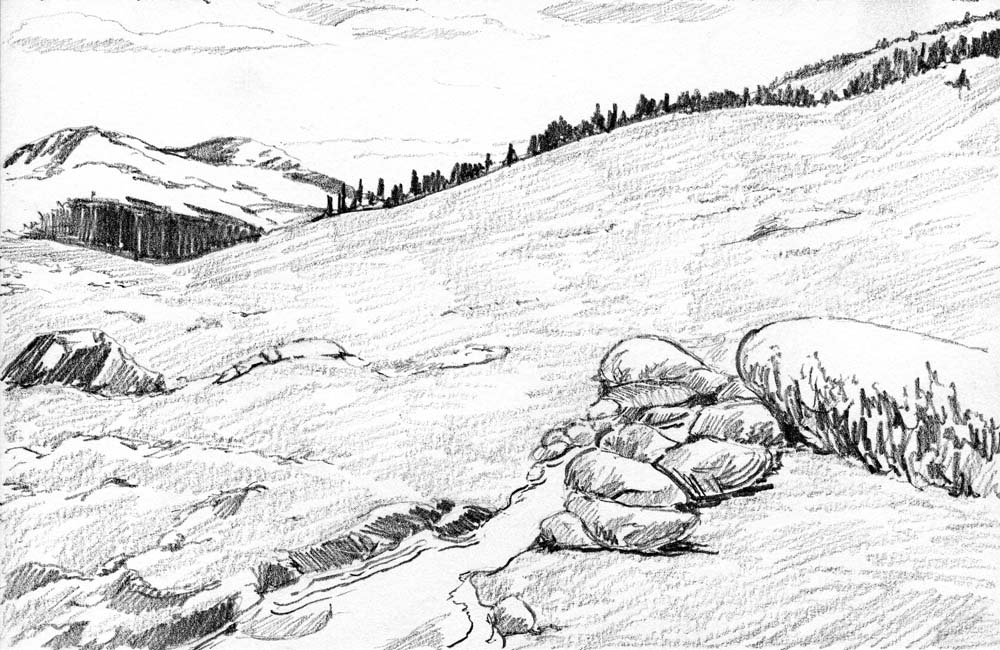
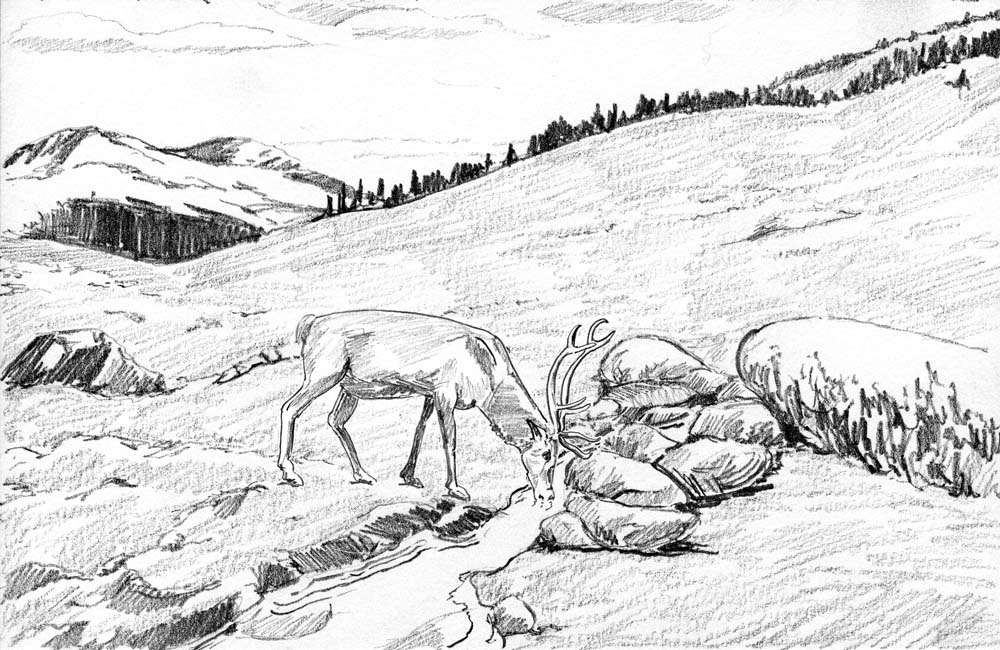
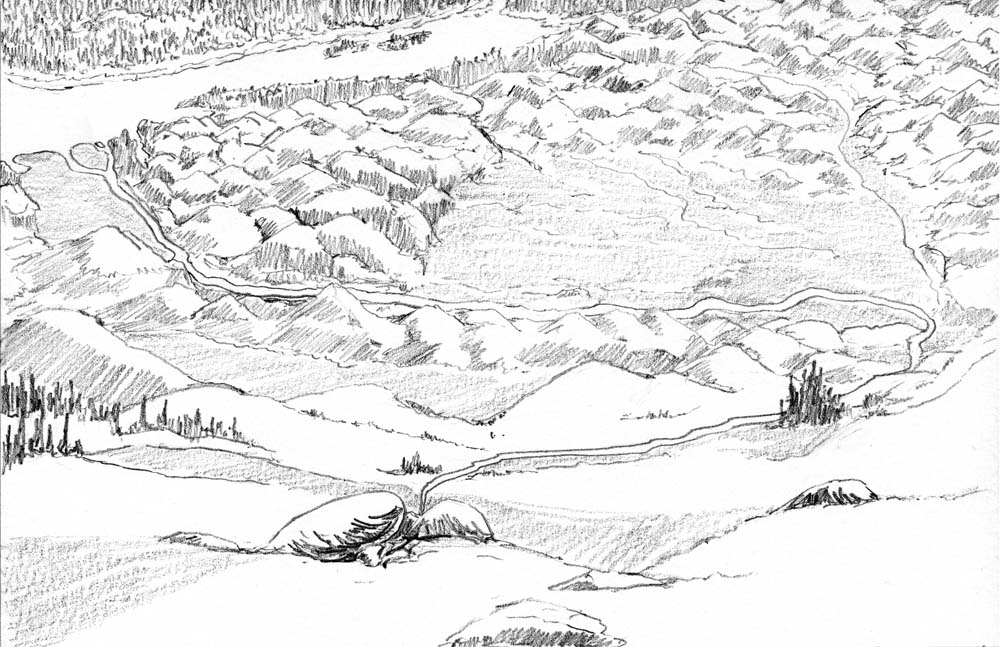
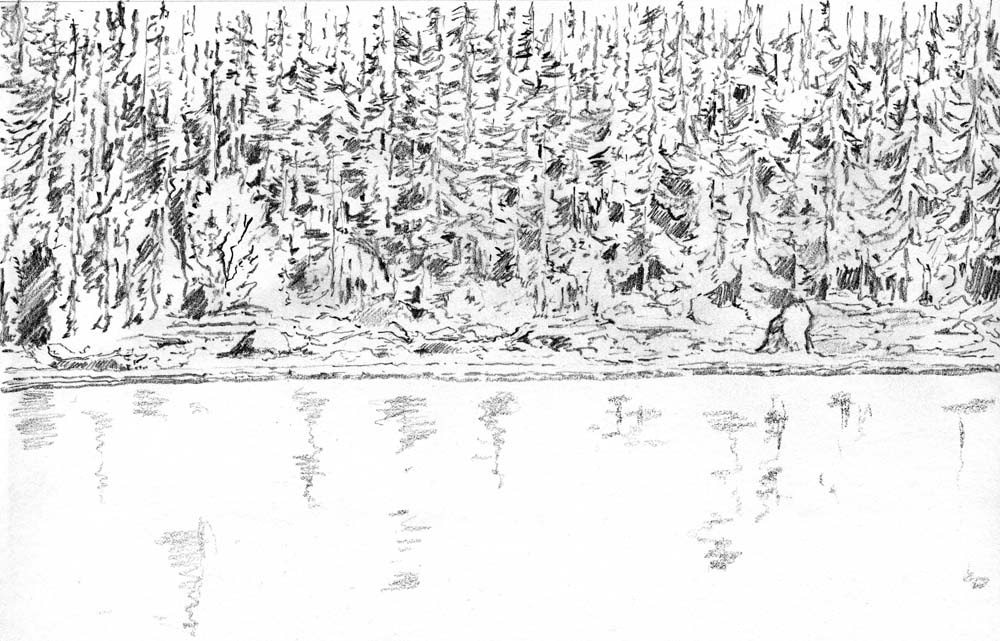

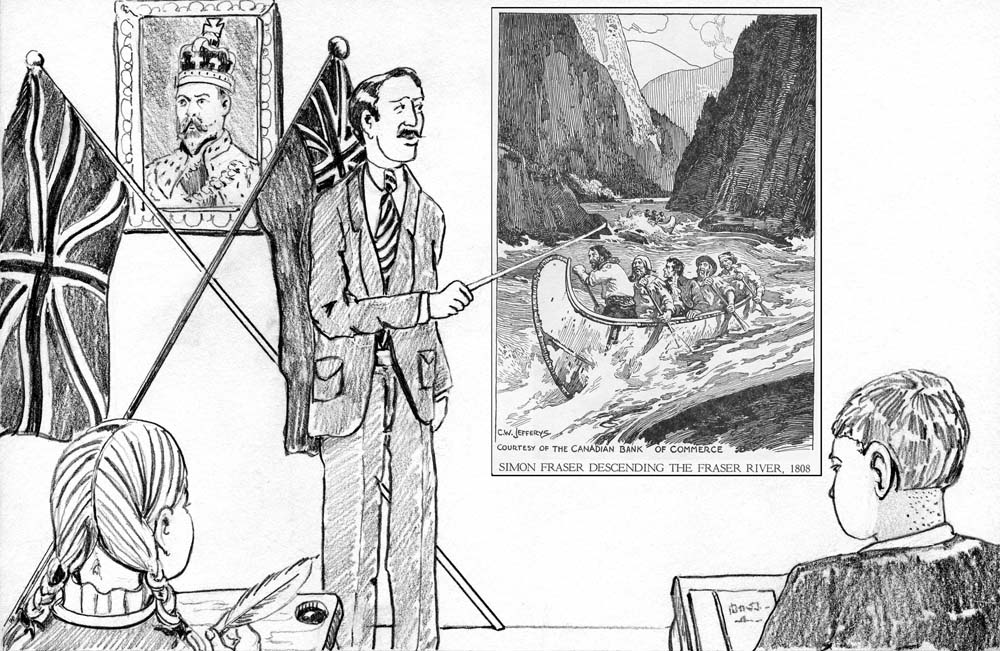
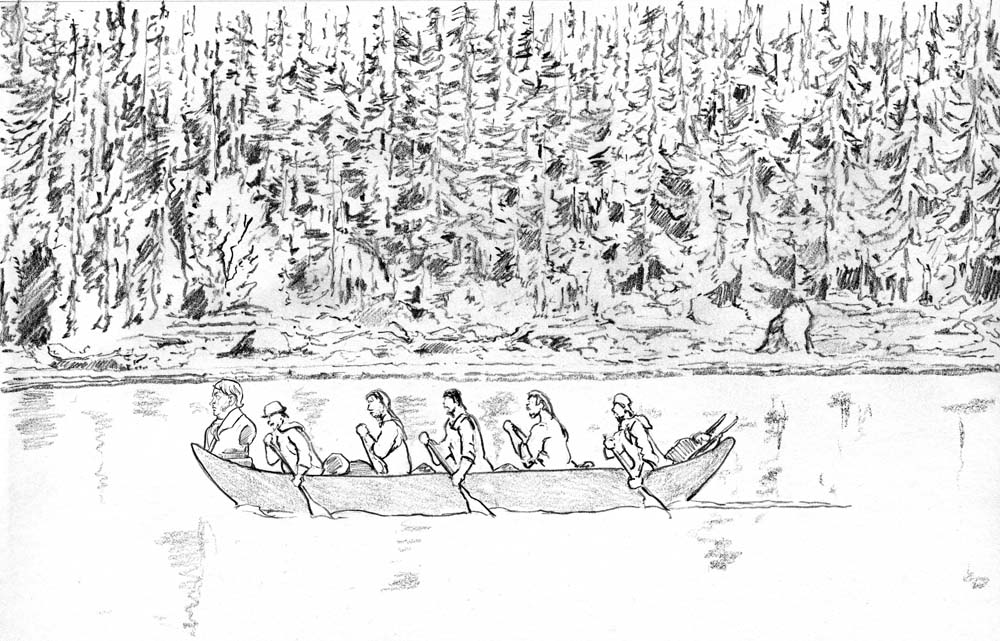
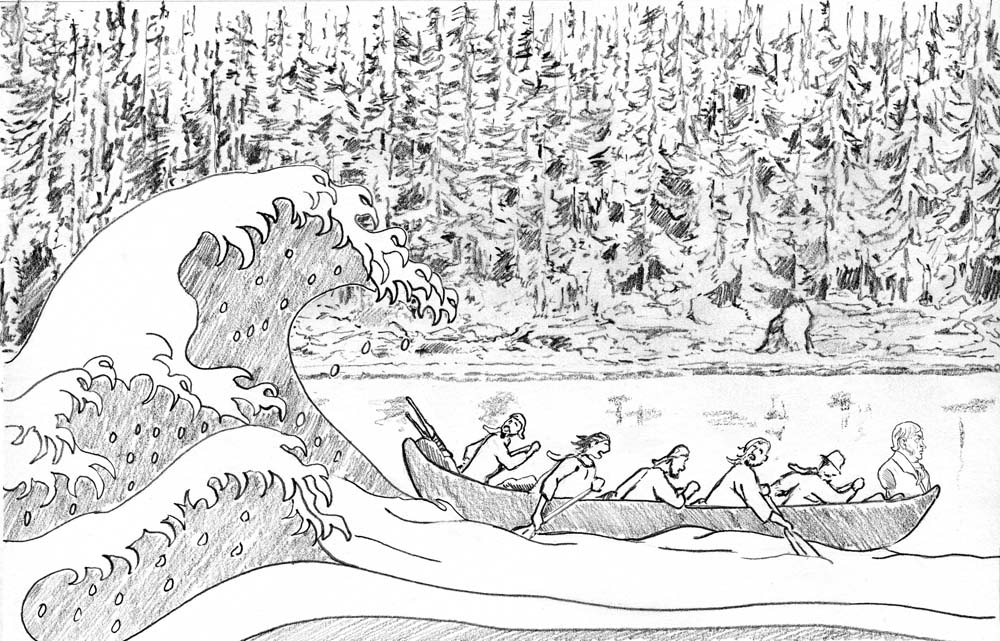

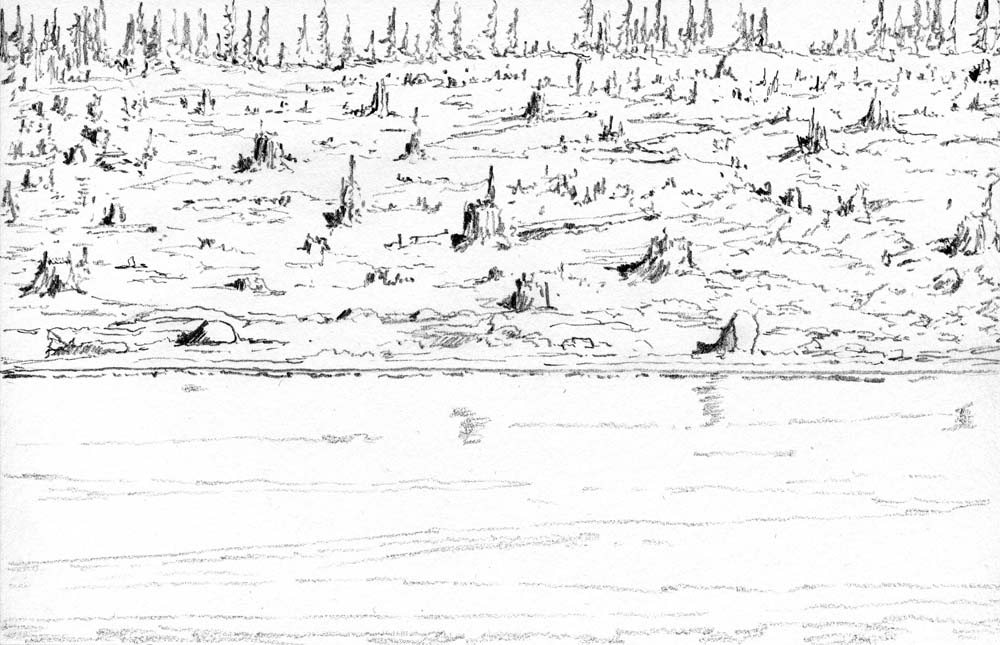
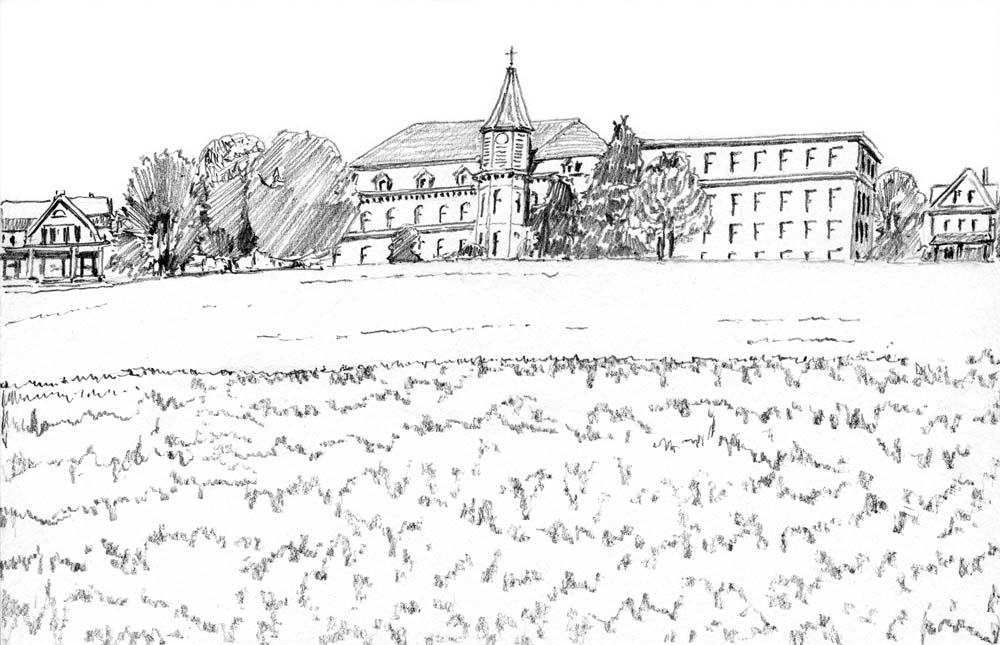
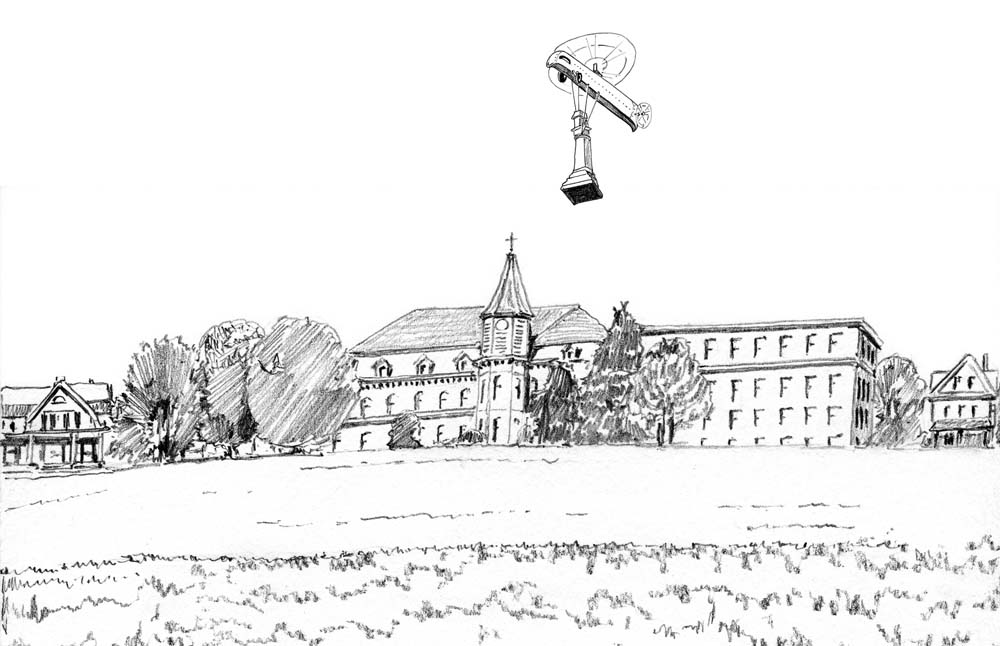
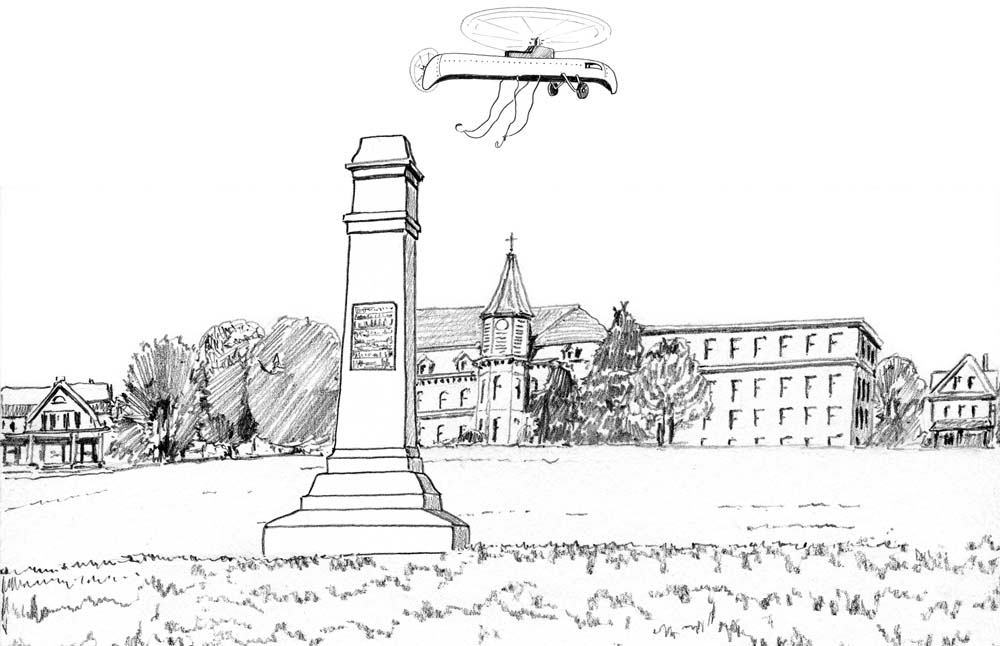
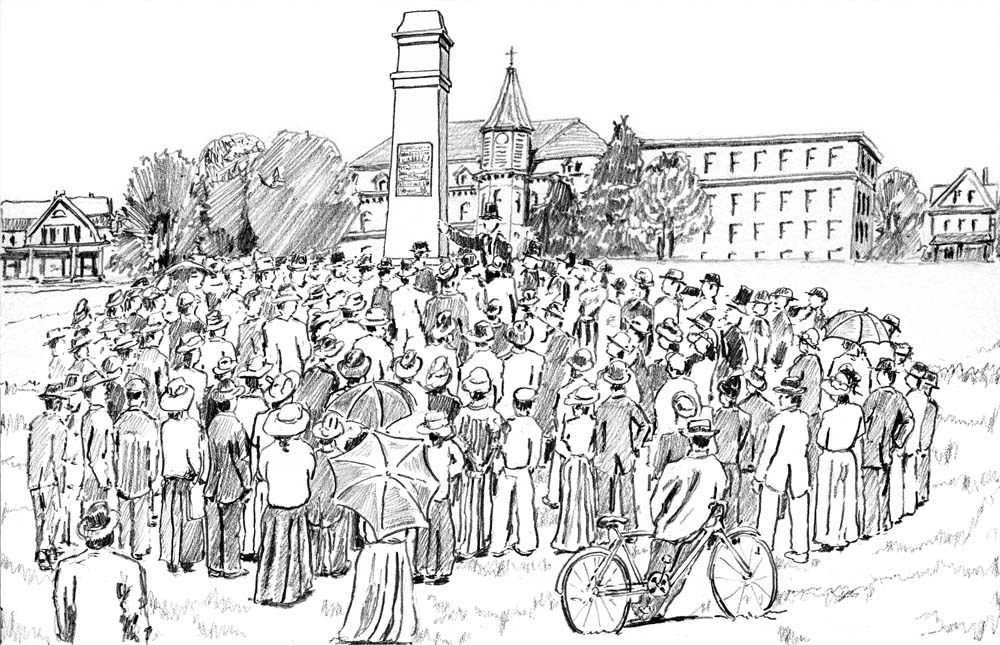
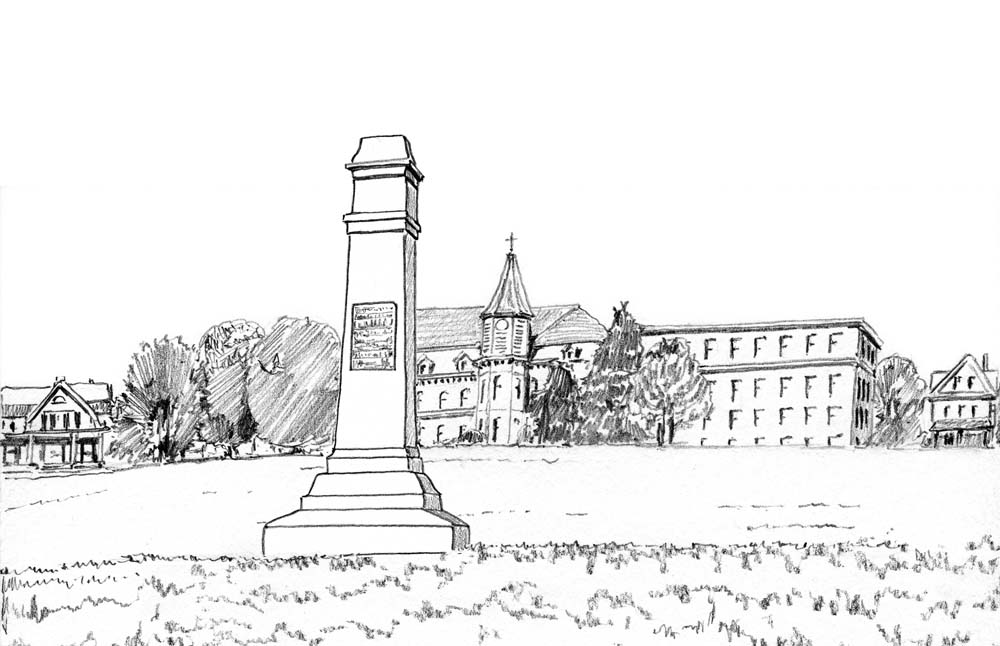
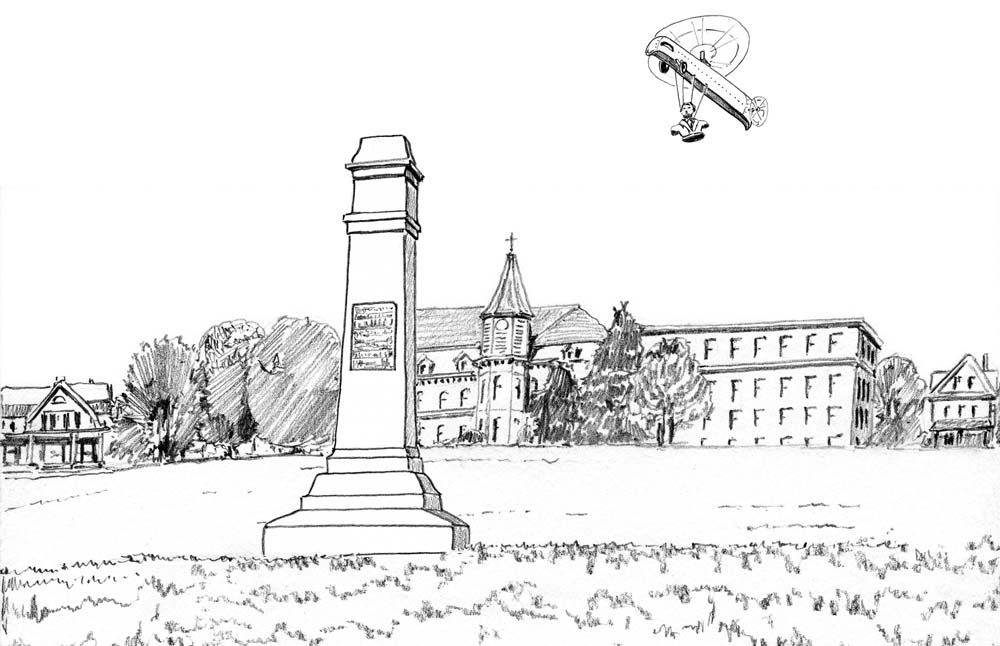
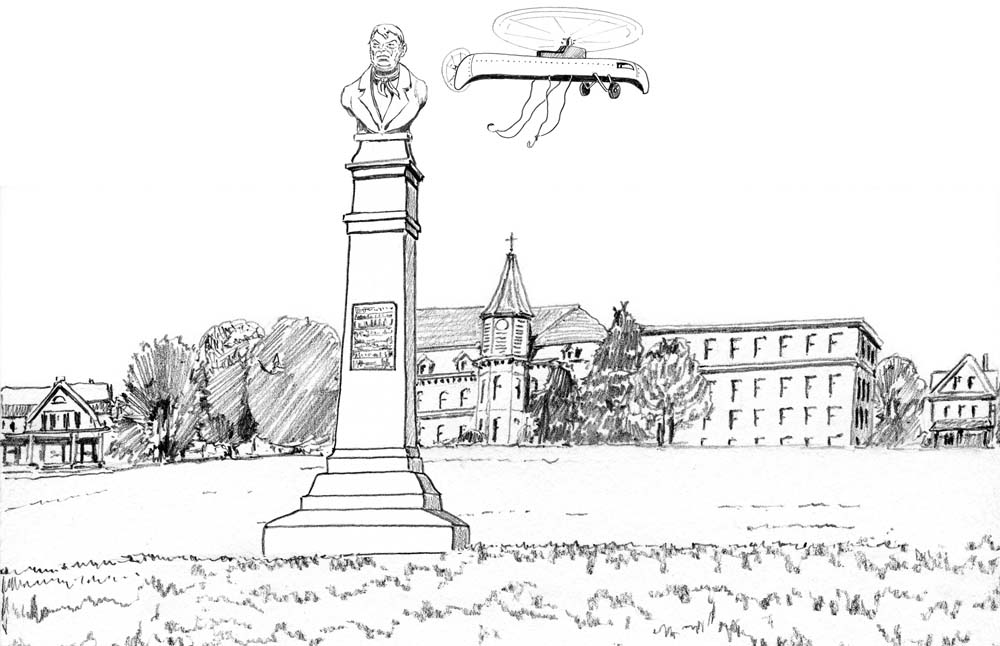
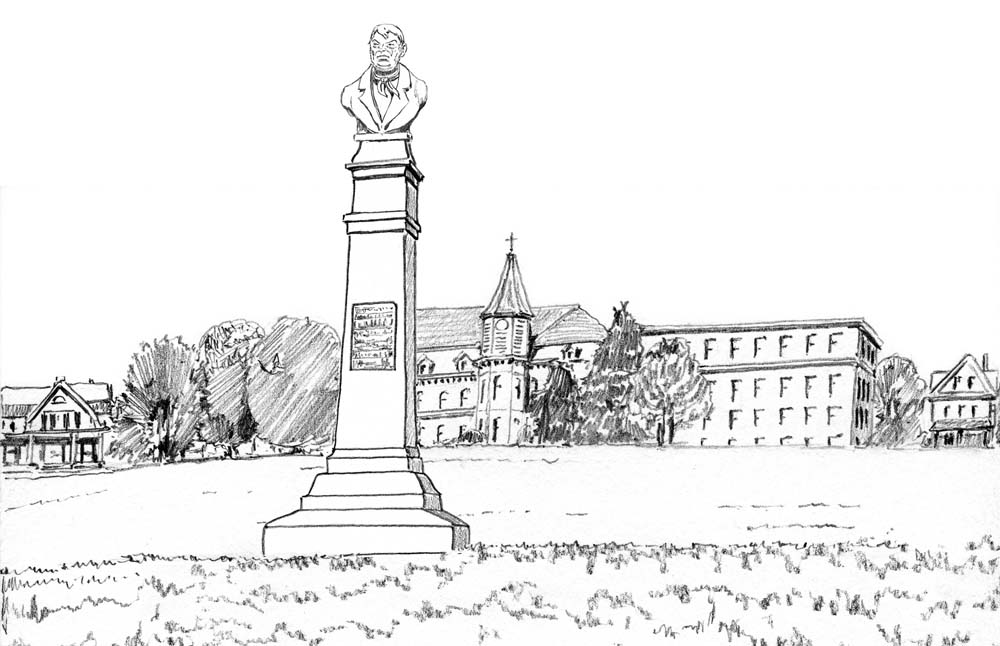
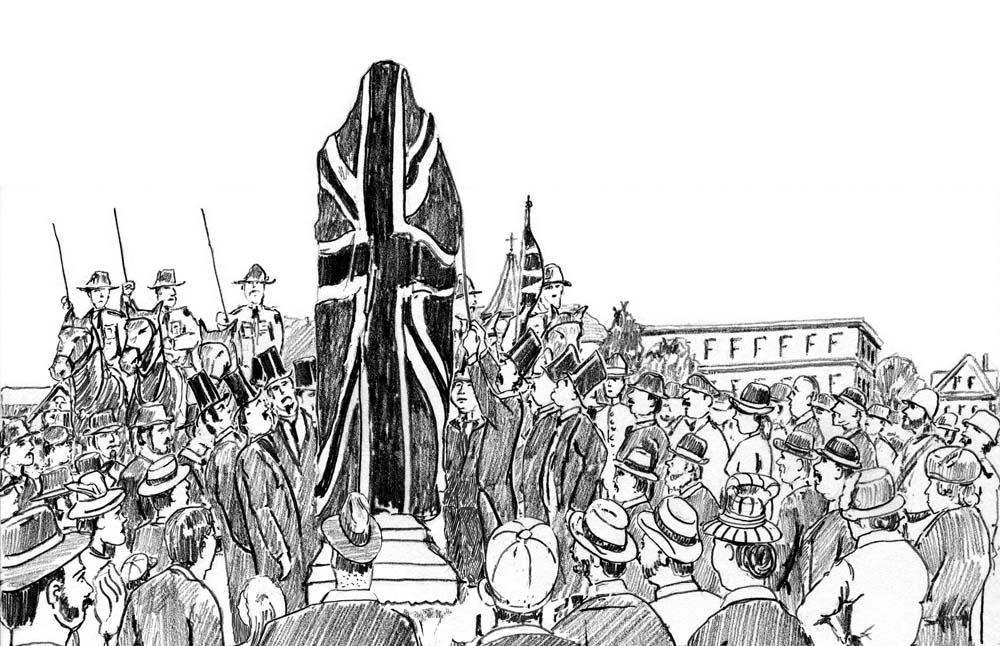
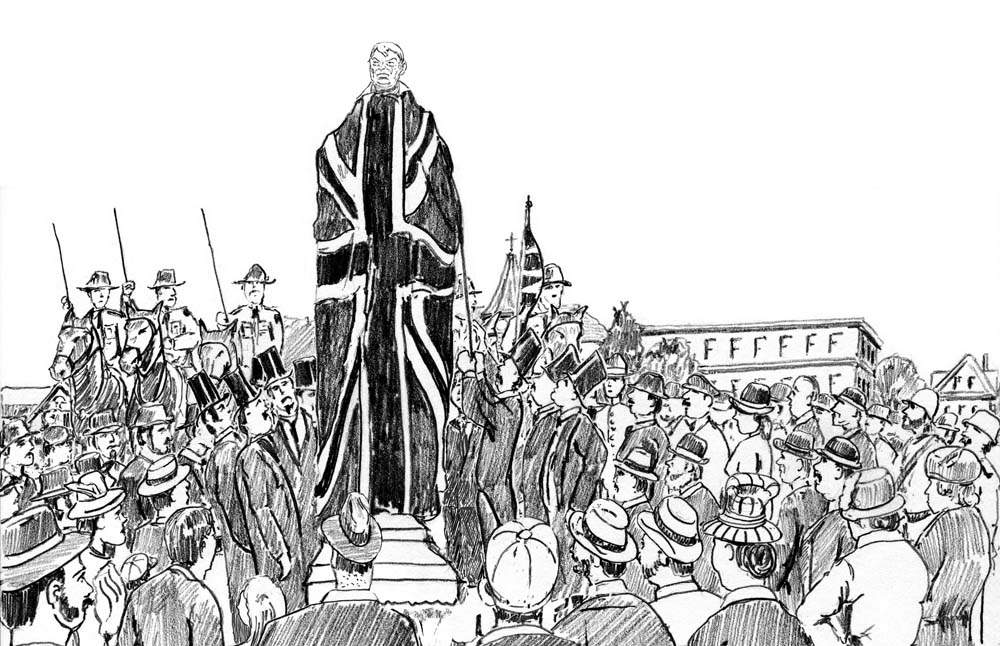
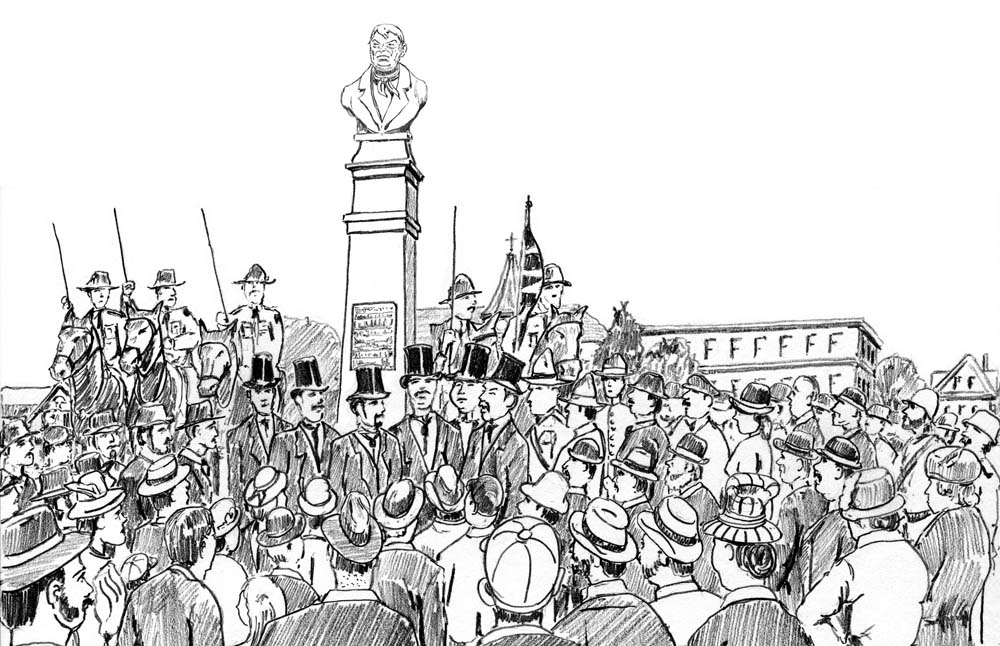
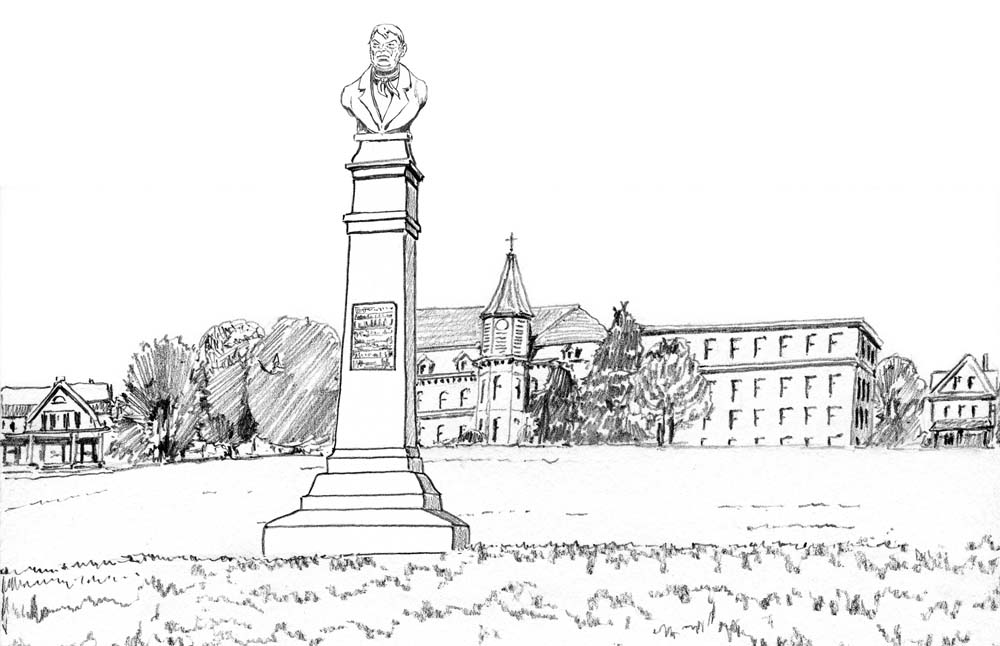
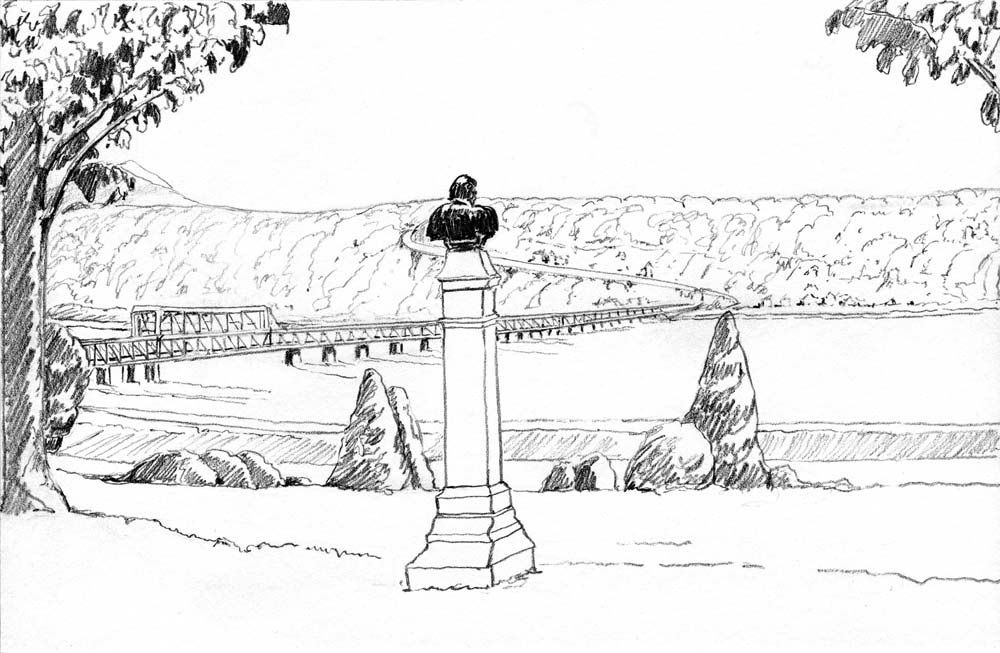

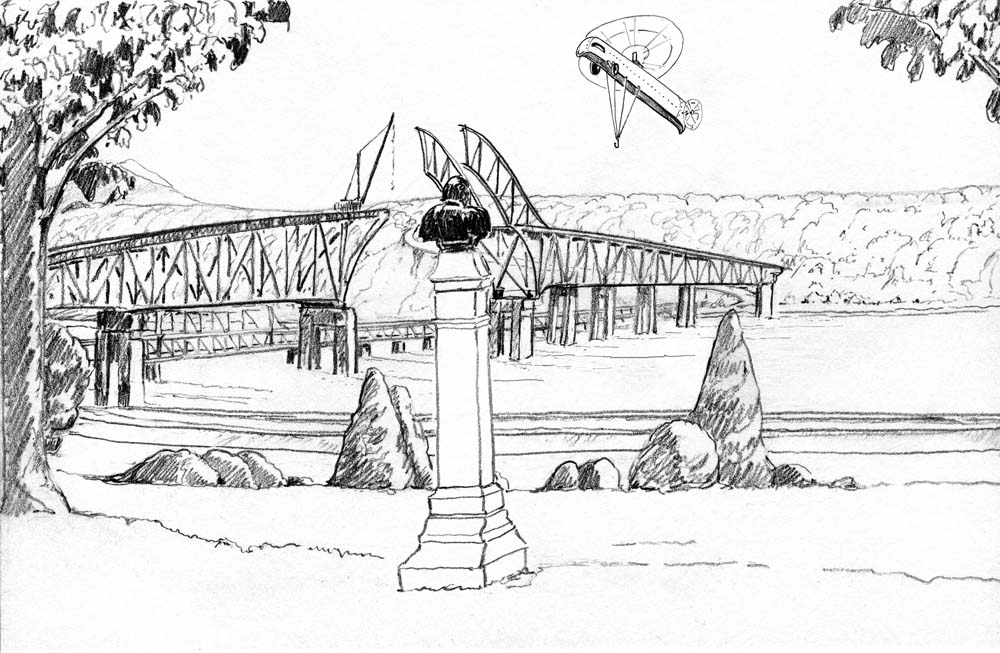
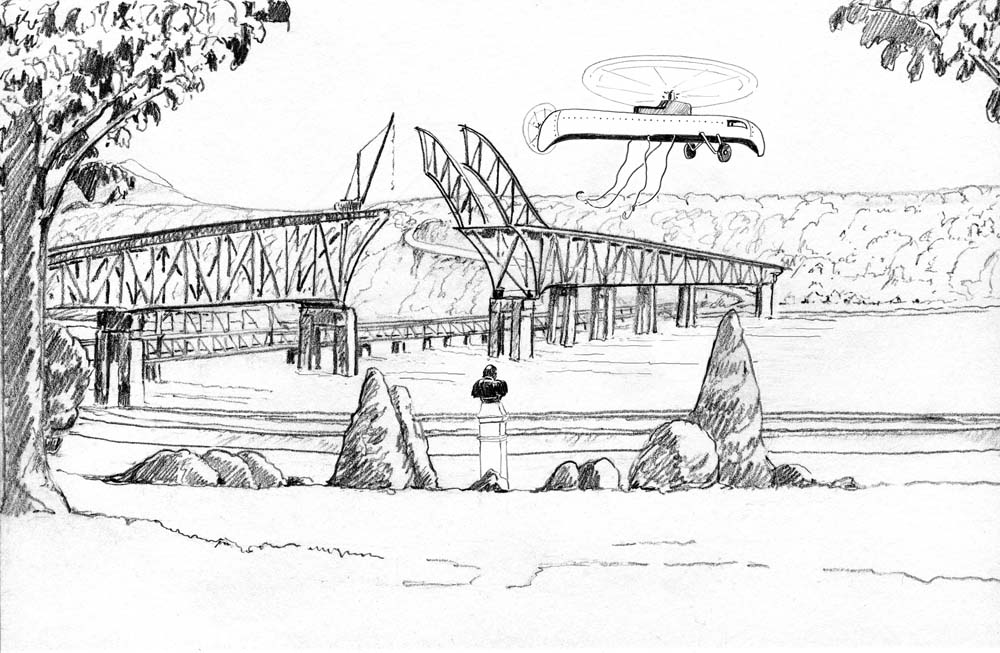
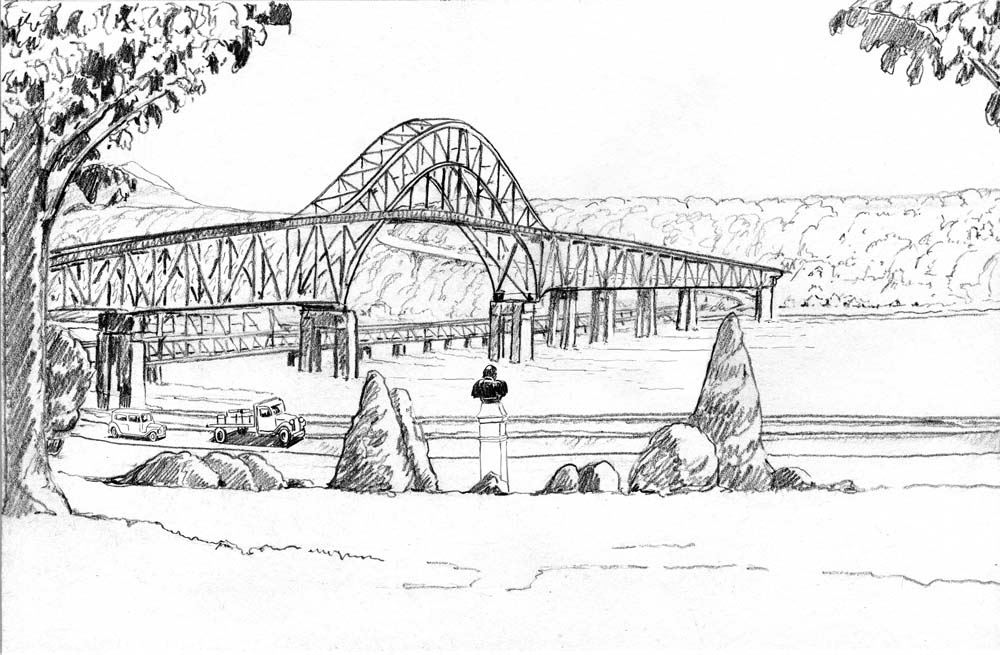
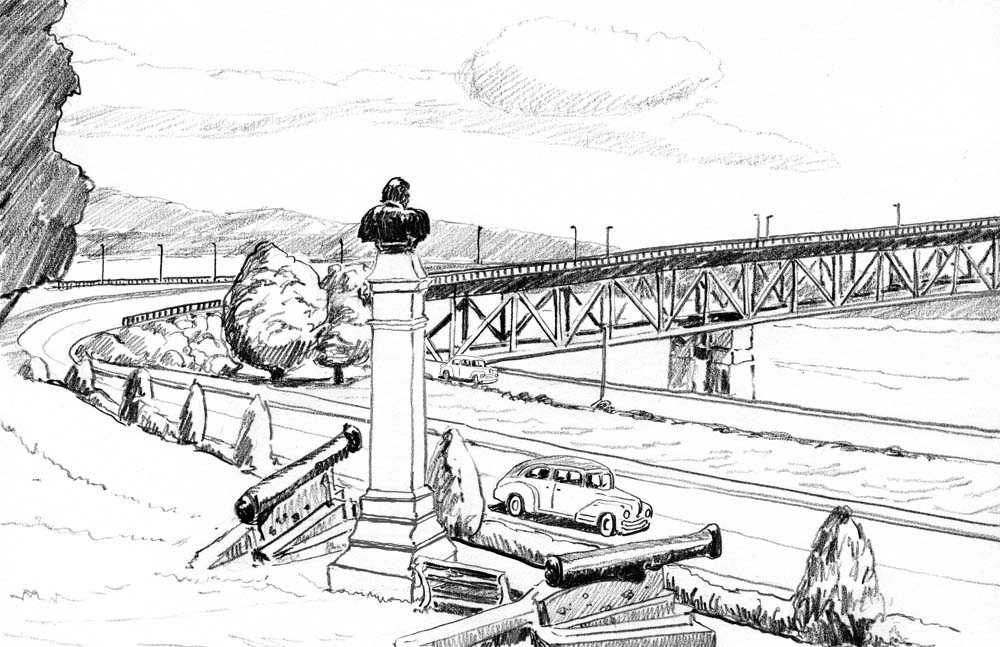

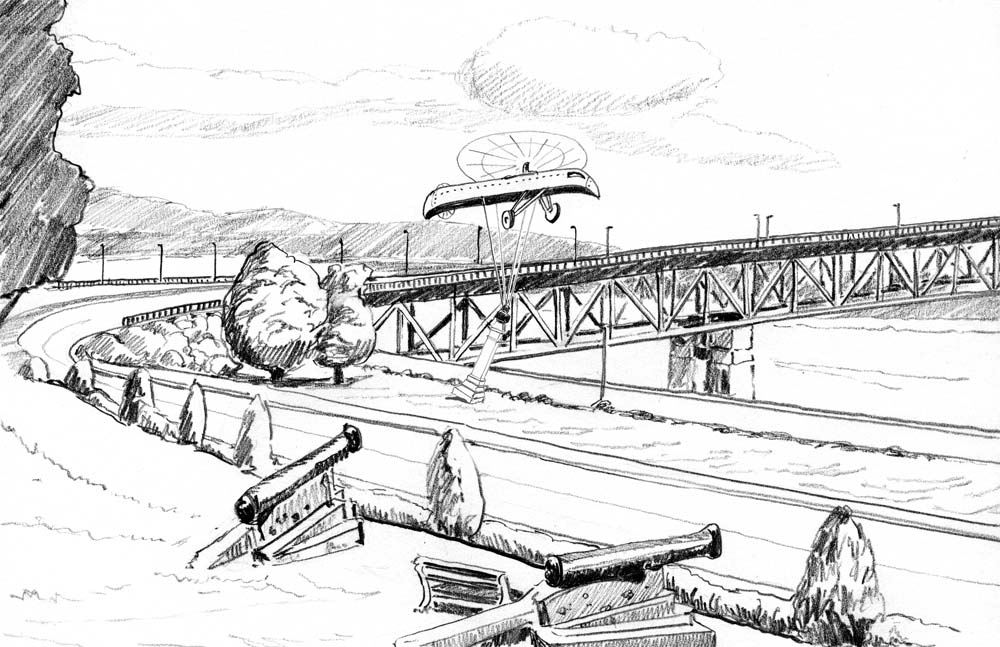
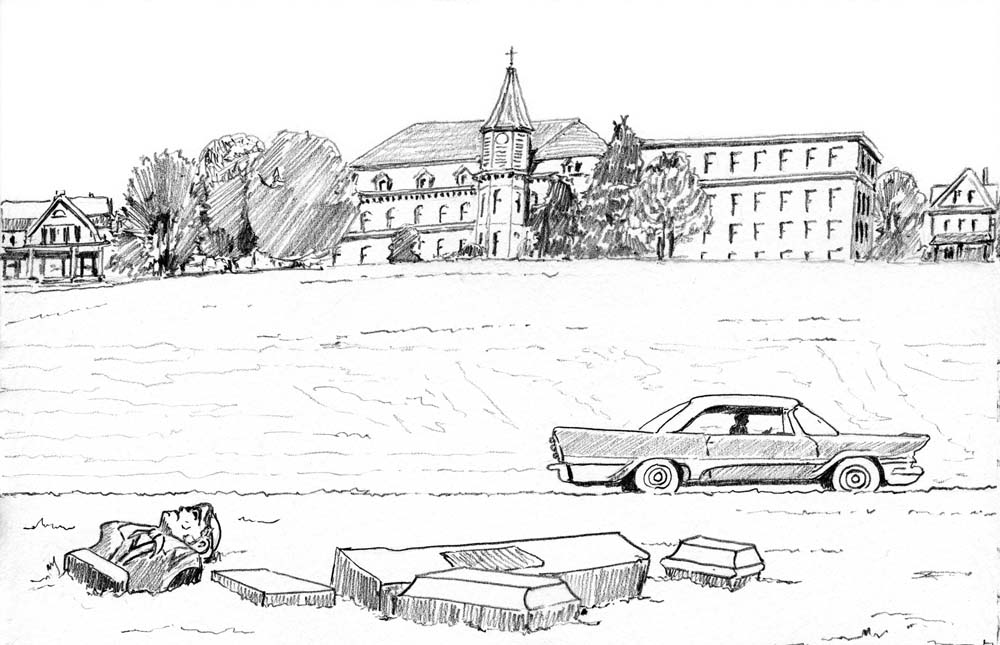
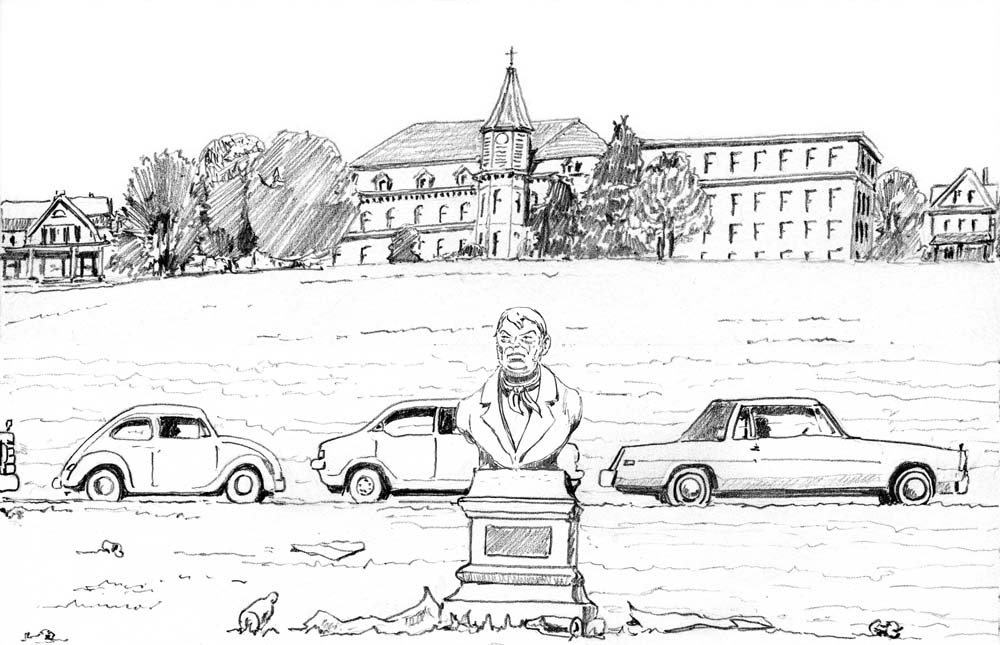
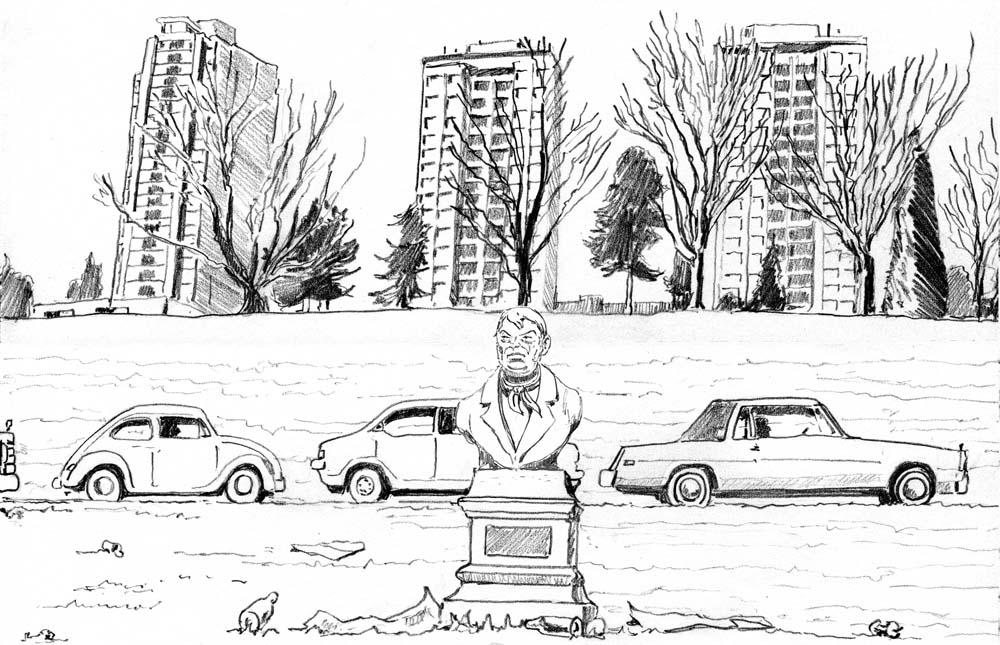

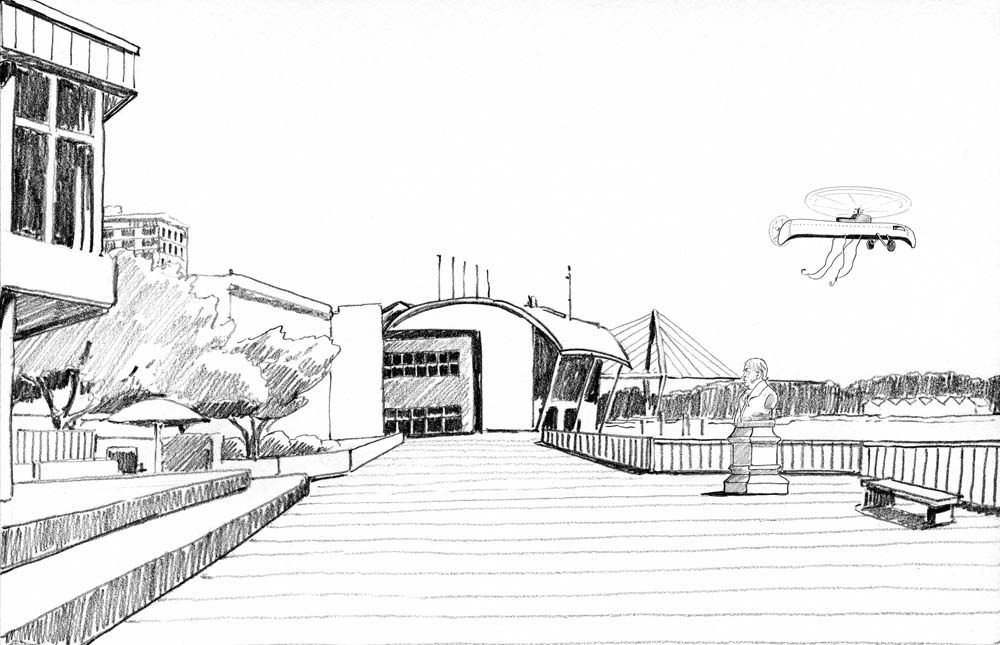
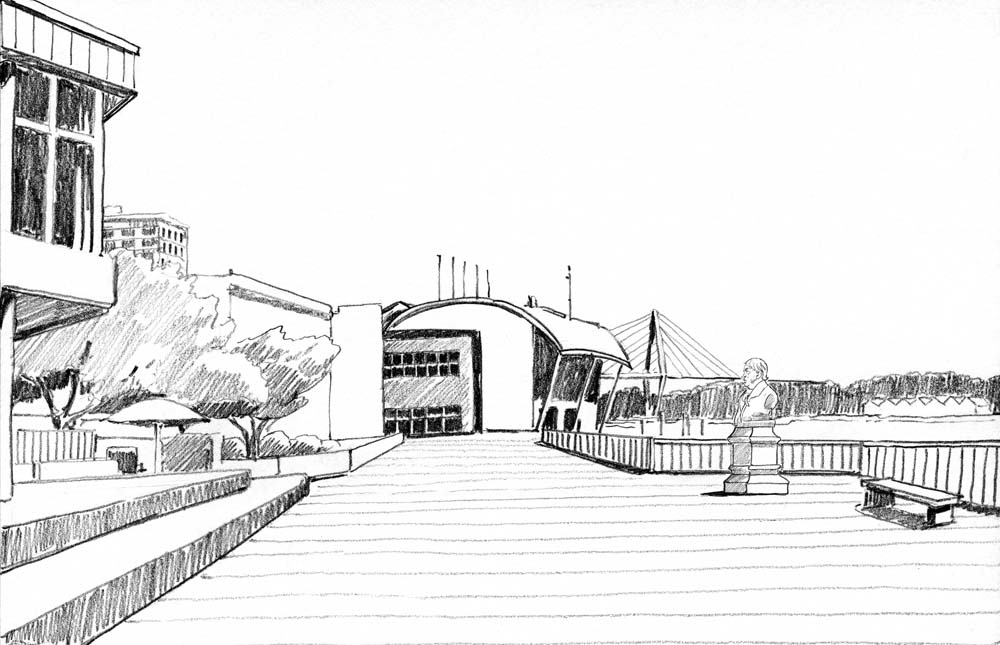
At this point in the book, the pages of New Westminster Council
minutes, describing the proposed lowering of the monument, are
inserted...
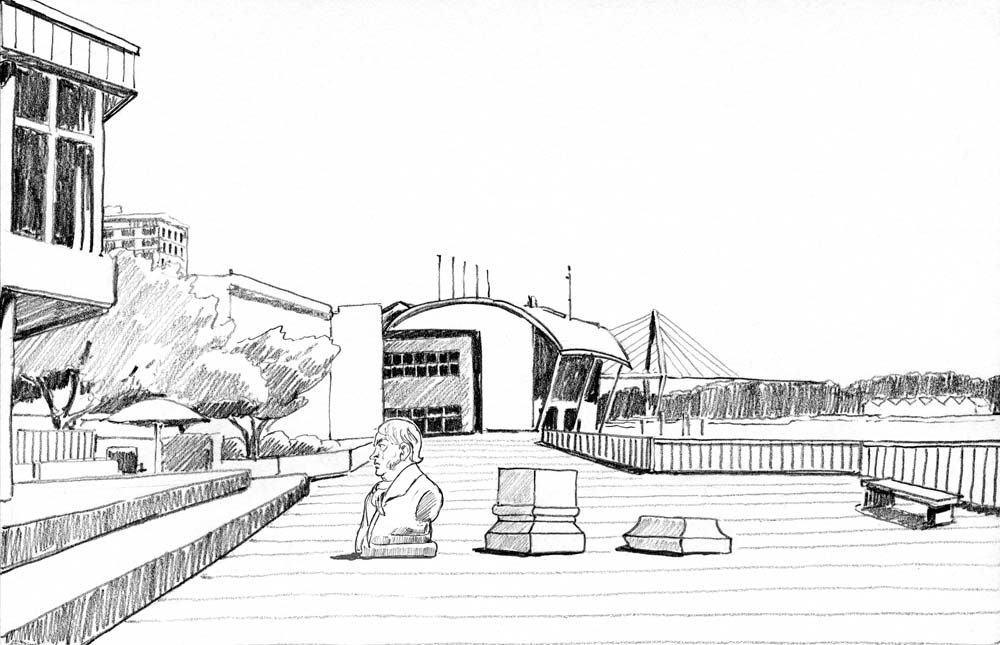
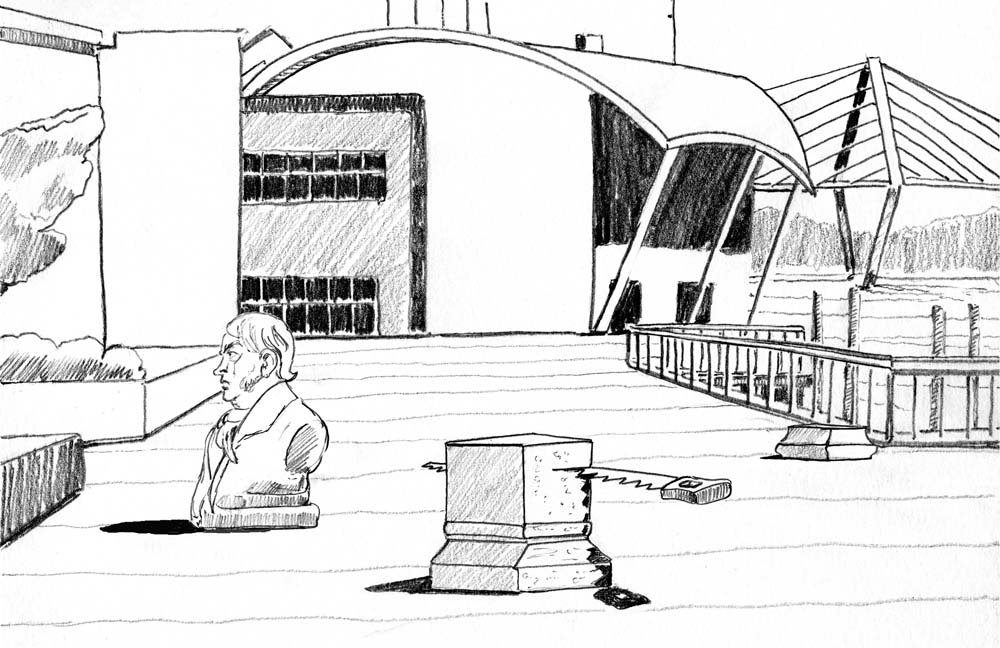
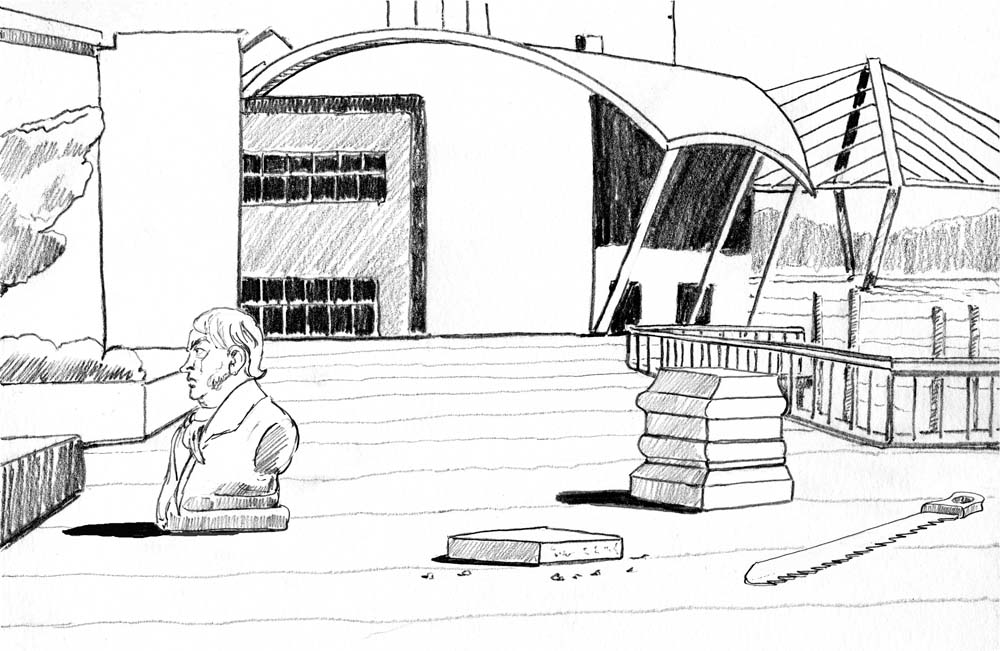

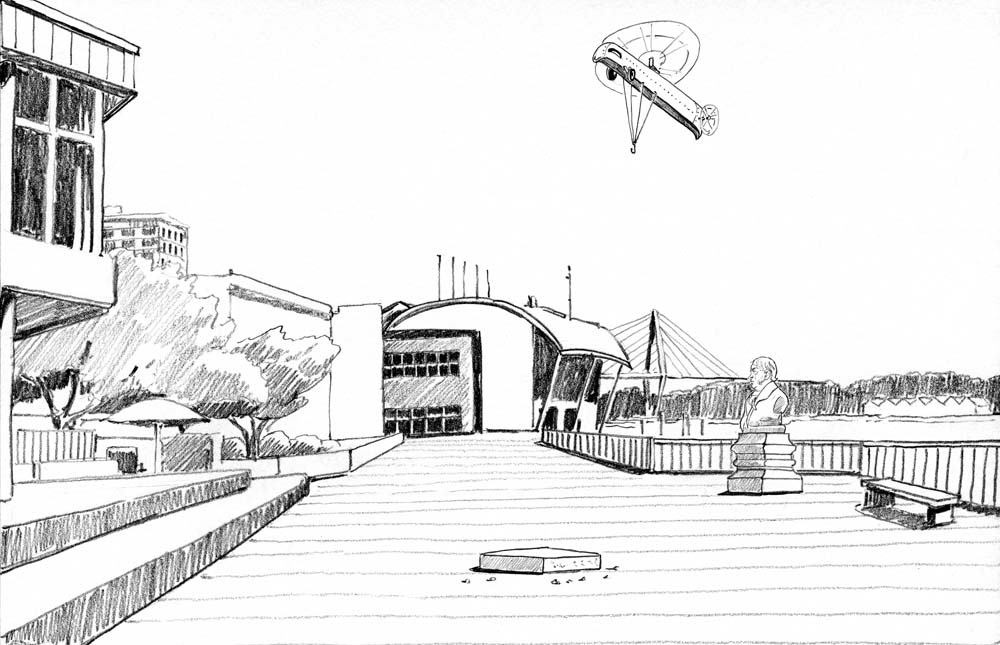
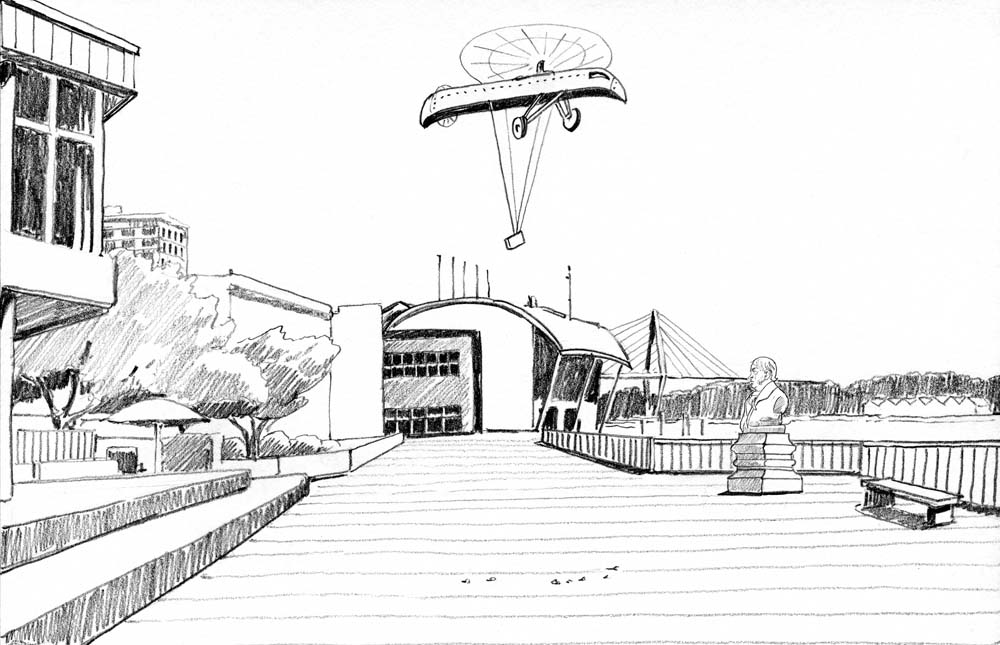
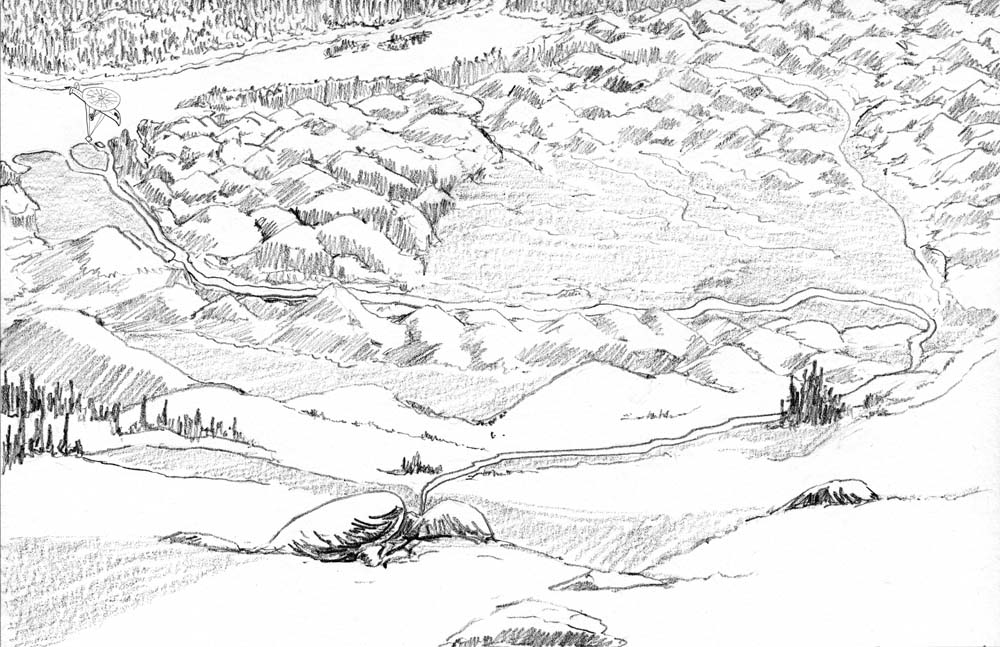
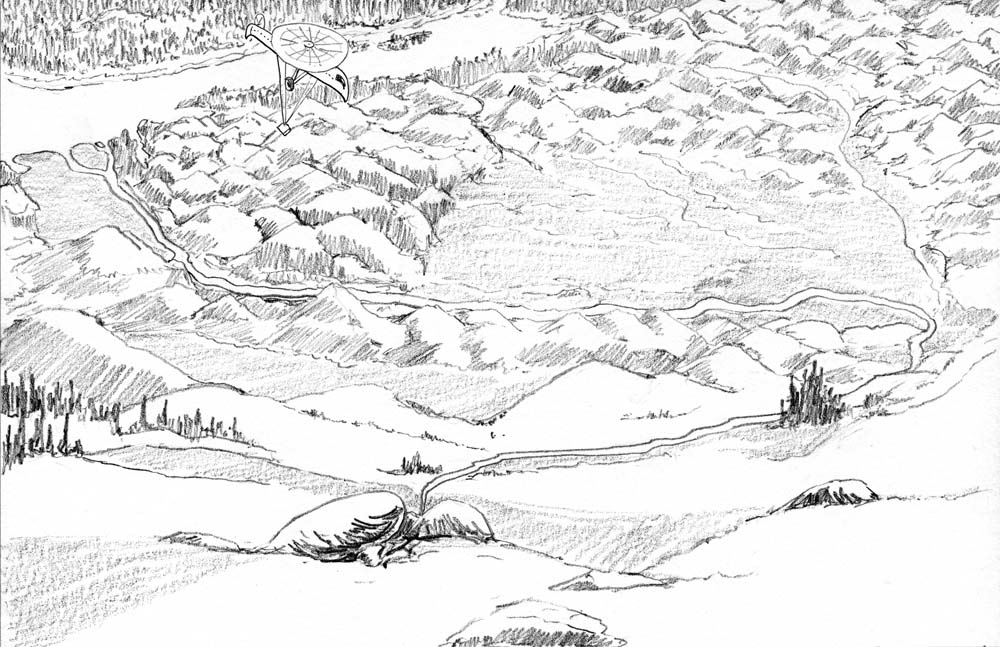
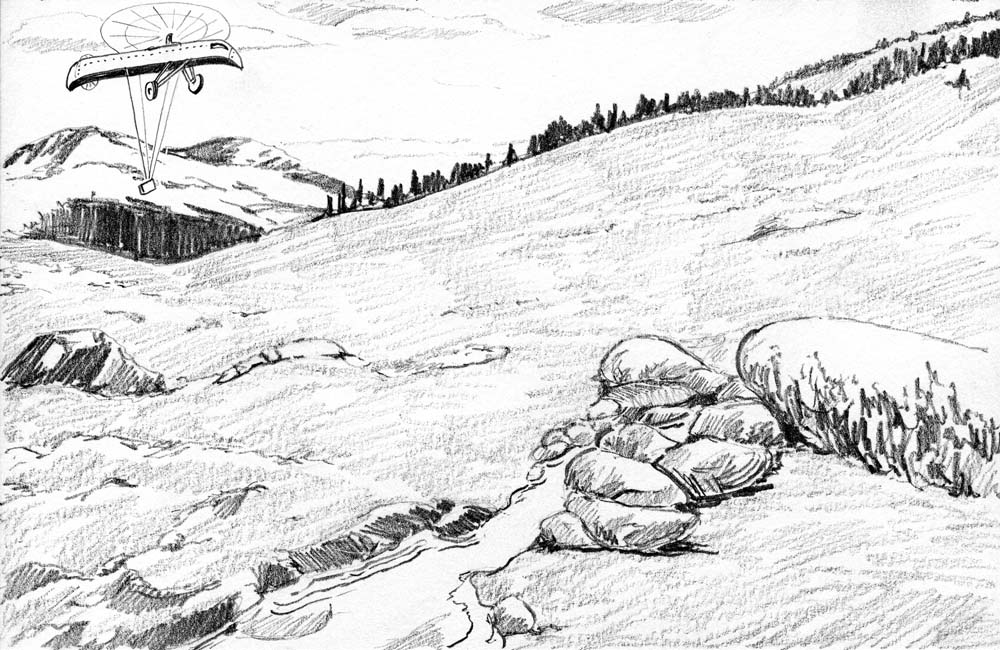
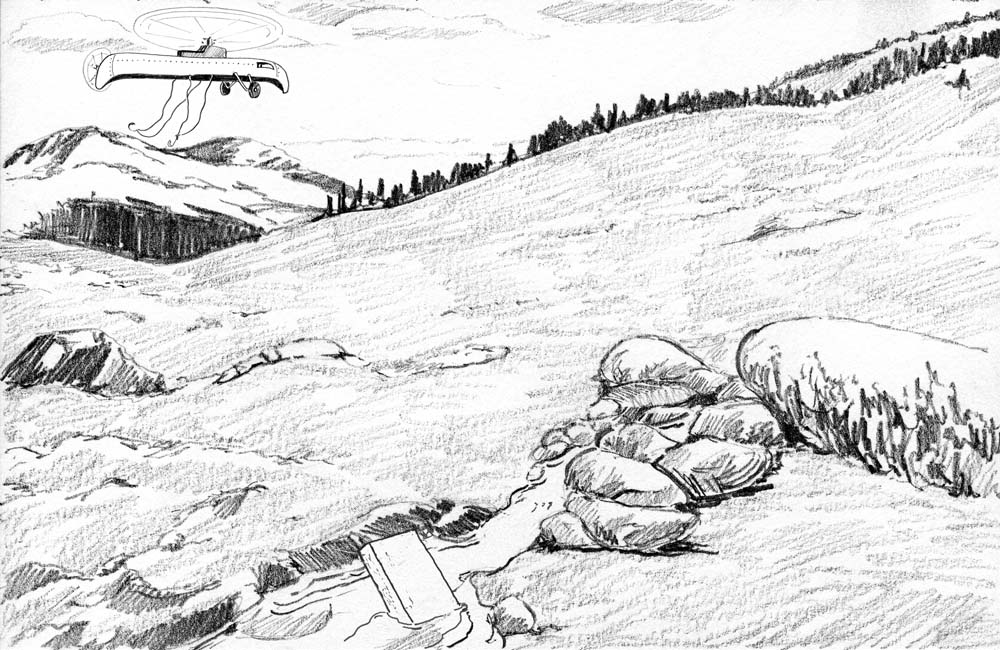
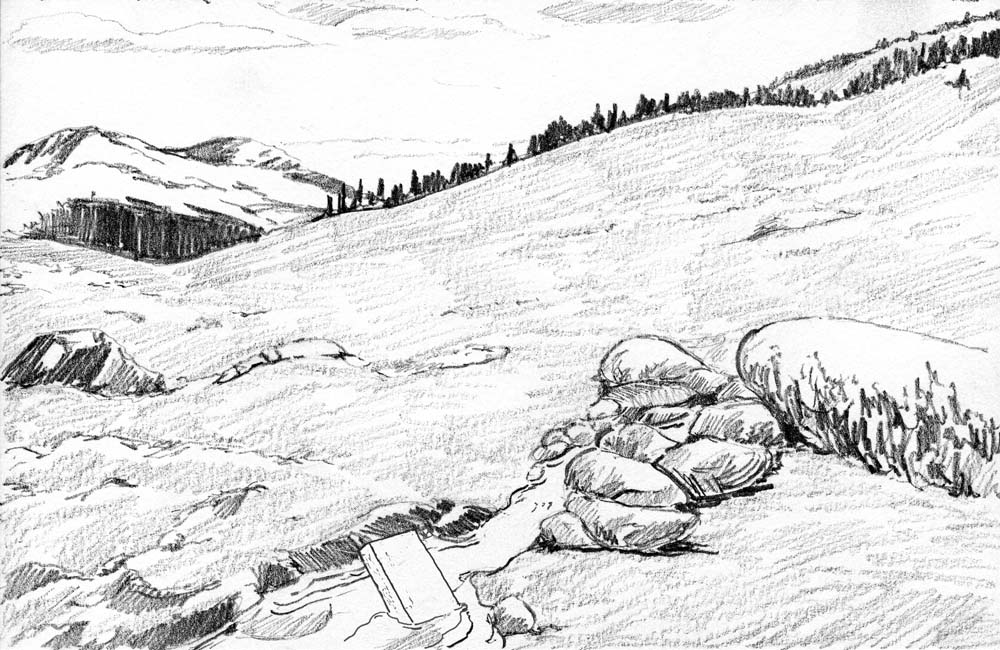
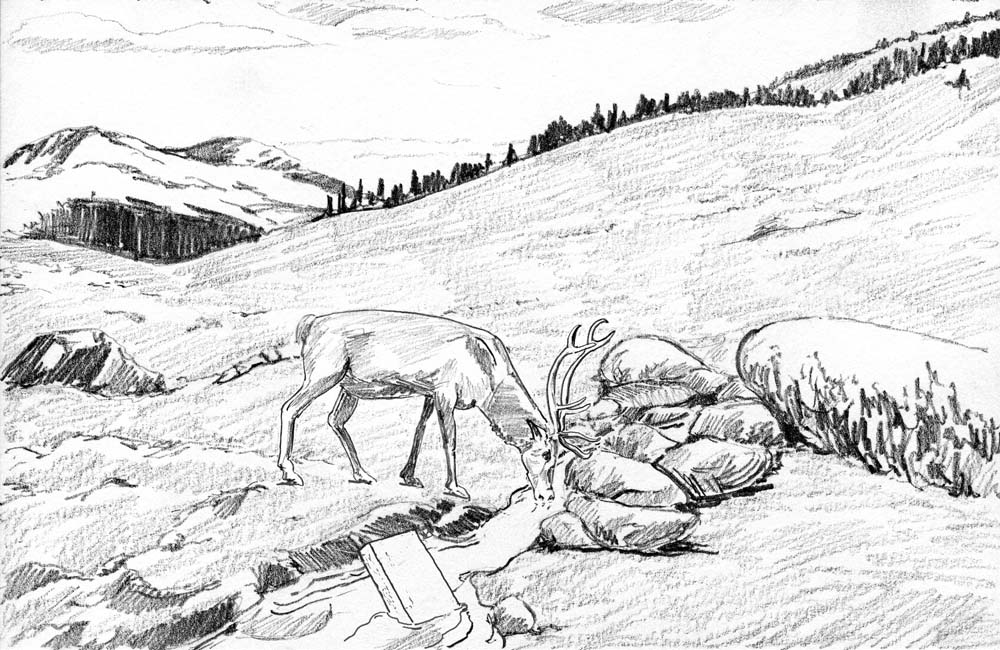
And, as a coda, I proposed drowning Simon...
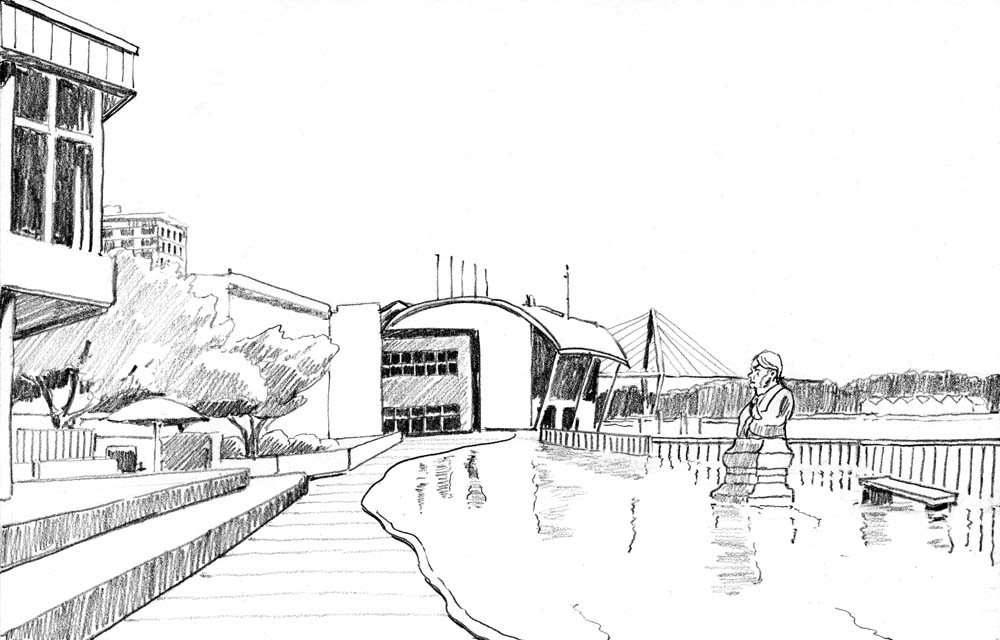
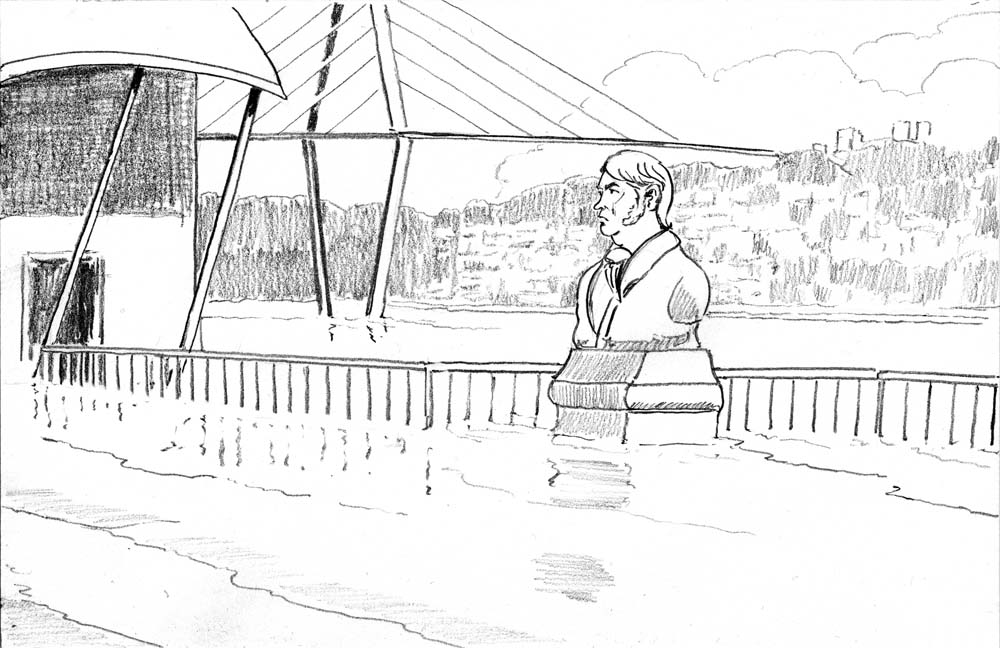
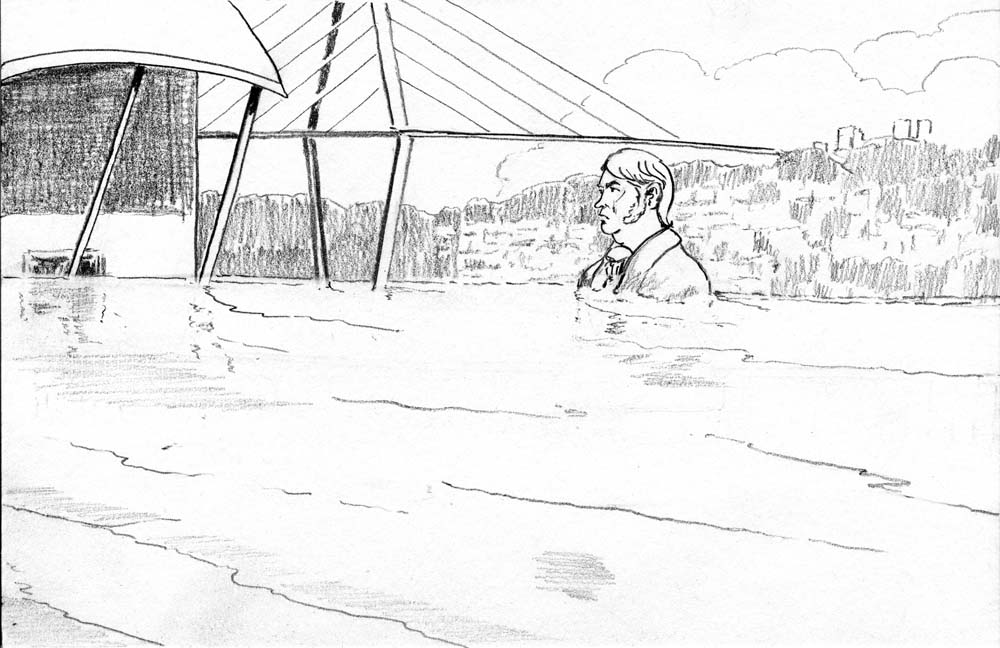

At the end, all is irrelevant if we don't deal with climate change.
©Contemporary Art Gallery, Maddie Leach and Michael Kluckner,
2019
